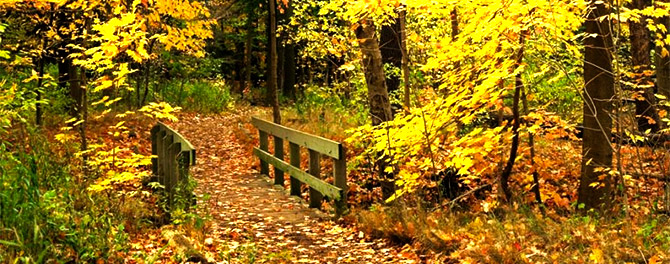Fall has arrived in the northern hemisphere, and in Toronto that means a profusion of glorious colors as the leaves turn from green to red and gold. What’s slightly less intriguing for the homeowner, however, is the problems caused by those leaves when they drop into the drainage system. The backup they cause in the pipes can lead to a variety of sink plumbing problems, both in your kitchen and bathroom sink. Here are our 3 top tips for preventing Fall plumbing problems.
Tip #1: Clean Up Regularly
Keep an eye on falling leaves and take notice of where they come to rest. They don’t just fall on the ground below the tree – wind, rain, and traffic can cause them to migrate en masse to hollows found in your yard such as:
- Eavestroughs
- Basement window wells, and
- Gutters
If you find leaves collecting in a particular area, there’s a good chance it’s an escape route for water from somewhere, and that could mean it enters the drainage system. A blockage in the drainage system can cause sink plumbing to clog, so rake up the leaves at least once a week and bag them immediately, to prevent them from being distributed across the yard a second time.
Tip #2: Fit Drain Covers
A variety of covers is available for keeping leaves and other debris out of your drains. Some covers are specifically engineered to catch fallen leaves, for the express purpose of preventing sink plumbing problems. Whether you fit a solid cover manufactured to fit your particular type of drain or a DIY solution made from some wire mesh weighted down with rocks, as long as the material is dense enough to stop even the smallest leaves and seeds from entering the drain it will work. In instances where you need to do regular drain cleaning and inspections, a DIY cover might be easier to remove when necessary.
Tip #3: Get an Inspection
Most plumbers recommend regular inspections of your drains and plumbing, and Fall is a good time to schedule one. Before it gets any colder, arrange to have your local plumber do the following:
- Conduct a camera inspection and identify any cracked or leaking pipes
- Check your hot water heater for full efficiency, and
- Conduct any faucet repair you might need
Check your sink plumbing throughout the home, too, because once everything is frozen outdoors it can be challenging even for the best-equipped professionals to gain access.
Preparing for Winter
The Fall is also a good time to prepare generally for Winter, by checking the insulation on all exposed pipes, making sure your sump pump is working effectively and repairing any signs of damp in your basement. Remember, a basement wall that is just wet in summer will be freezing cold in winter, and could cause lasting damage to your home’s foundation or items stored in your basement. Cover your outdoor faucets with Styrofoam cones, available from your local Home Depot, Rona or Lowe’s at around a dollar each.

